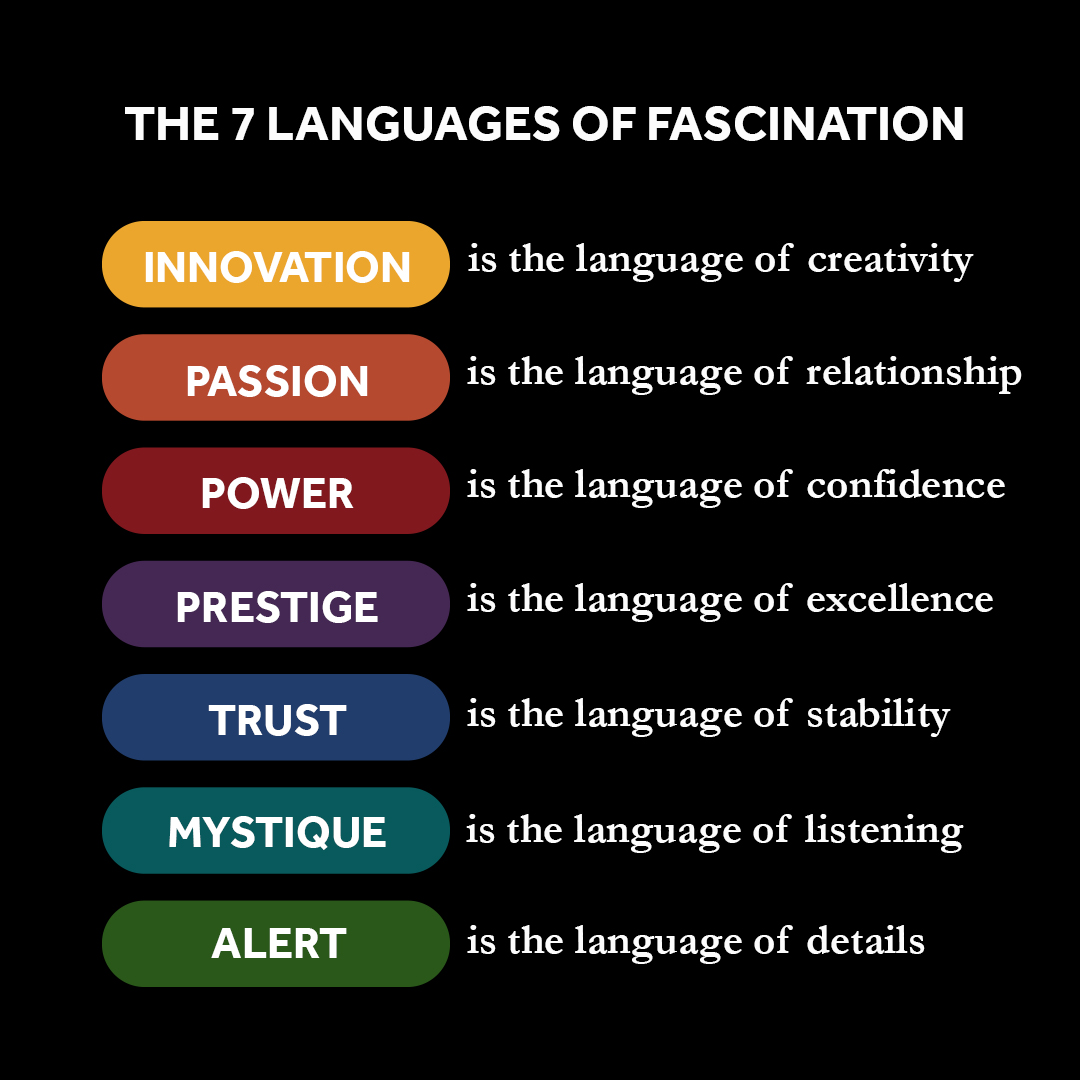The room hummed, filled to capacity with director-level executives, buzzing with a combination of caffeine and curiosity.
I was leading a keynote at the global headquarters of a Fortune 100 brand located in Northern California.
I had grouped the participants into seven different teams, according to their primary Advantage. For instance, Team Alert included all the participants with a primary Alert Advantage. The same for each other Advantage: Team Innovation, Team Trust, Team Mystique, and so on. Each team was defined by one primary personality Advantage.
I gave the teams fifteen minutes to work together to develop solutions to a problem. When time was called, a representative from each team presented their team’s ideas to the larger group. With that, the Team Advantage exercise began.
My certified advisors and I have done this exercise with corporations and small business groups ranging from gigantic corporations to tiny retail shops, from hundred-year-old global brands to ferociously aggressive start-ups. Yet while the groups are different shapes and sizes, the principles are simple and universal. Adding value begins with understanding what others value from you.
All seven teams were given the same task: develop one potential solution to a common challenge. Every director in the room was equipped with different skills and knowledge and areas of expertise. While job function and title were relevant, they were not the most essential piece. When teams work together, the highest level of performance is not merely a function of what each individual does. It’s a result of who each personality is.
After we divided the group into teams based on their primary Advantage, we observed how they interacted. True to form, each team acted in accordance with the patterns of their strongest qualities. For example, Team Power pulled their chairs into a perfect square formation, facing each other directly, missing only the boardroom table. They each confidently put their opinions before the group, then debated their merits.
Team Trust kept their chairs in two orderly, straight lines, never moving them from where they’d been set up at the start of the day. They were consistent and prepared in their idea development, never interrupting each other, staying close to the framework of the assignment.
Team Mystique spoke little, working solo alongside each other, writing notes on their own pads of paper before going around the circle. One by one, they quietly outlined their thoughts to each other. Each of them had carefully considered their ideas before putting them forward to the team.
Innovation speaks the language of creativity. As expected, Team Innovation was very, very unconventional. They moved their chairs into an amoebic circle, a free-form gathering of unlaced shoes and crumpled paper. Immediately they began launching a water cannon of ideas, one after another, each leaping higher than the last.
A representative from Team Alert raised her hand, politely asking how much time remained before the deadline. These directors were diligent in their assignment, highly attuned to the pros and cons of each option discussed. Alert personalities speak the language of details, and I felt safe just standing next to them.
Next I walked over to Team Prestige. They had many excellent ways to improve results and raise the bar. (And I’m not entirely certain, but I think I overheard the Prestige members debating which of them should be selected to present—before they’d even begun discussing ideas.)
Of all the groups, Team Passion was hands down the most rambunctious. Awash in high-fives, backslaps, and woo-hoos, they furiously scribbled their concepts with a fat marker on an oversized Post-it note that quickly became filled with half thoughts and word associations. “Yes! Great job. Love that!”
Working on Team Passion seemed more a game of charades than a corporate ideation session.
All of the Advantage Teams solved the marketing challenge in a way that matched their shared Advantage. Although they all worked on the same task, each team worked together very differently, according to their shared primary Advantage. They all solved the task, but they used very different approaches and tools.
I intentionally gave each team just 15 minutes to develop a marketing solution. Short time frames intensify team interaction, and accentuate personality styles.
After those fifteen minutes were up, each group picked one person to share the team’s solution. When it was time to present ideas to the overall group, each of the seven teams sent one person to the front (except Team Prestige, which sent two, almost like co‑chairmen).
Team Innovation went first. Innovation personalities are born to brainstorm, and independently choose their agenda. They presented a whole range of ideas and then dropped them, moving on to brainstorm on a completely unrelated issue. A fire hose streams fiercely, yet not always with precision.
Team Alert shared a solution that was practical, straightforward, and imminently doable.
Team Mystique shared an idea that was subtle at first, almost unremarkable, yet after further explanation, proved brilliant.
And then there was Team Passion. Still on a sugar-buzz high of camaraderie, they cheered on their teammate who went to the front of the room. While the oversized post-it notes had been filled with ideas, they loved all the ideas so much that they couldn’t pick just one. That’s the Passion personality: expressive, social, optimistic. They wear their heart on their sleeve (and sometimes it covers their whole outfit).
This exercise was a metaphor for the everyday workplace, revealing how each Advantage is most likely to add distinct value to their team, company, and customers.
I was giving them a live demonstration—using themselves as the example—of how different Advantages communicate in predictable and identifiable ways.
The exercise also illustrates that each Advantage speaks a different “language.”
We each communicate in a certain way, and it determines how the world sees us. Passion personalities speak the language of relationship, for example.
Trust speaks the language of stability, and Mystique speaks the language of listening. Everyone on your team speaks a certain language.
You do, too.
It’s the way you’re most likely to communicate in meetings, in memos, and every other step of your job.
WANT TO DISCOVER HOW YOUR TEAM COMMUNICATES? PURCHASE TESTS FOR YOUR ORGANIZATION HERE.
Share these tips on how to sell fascinating ideas with your followers!









